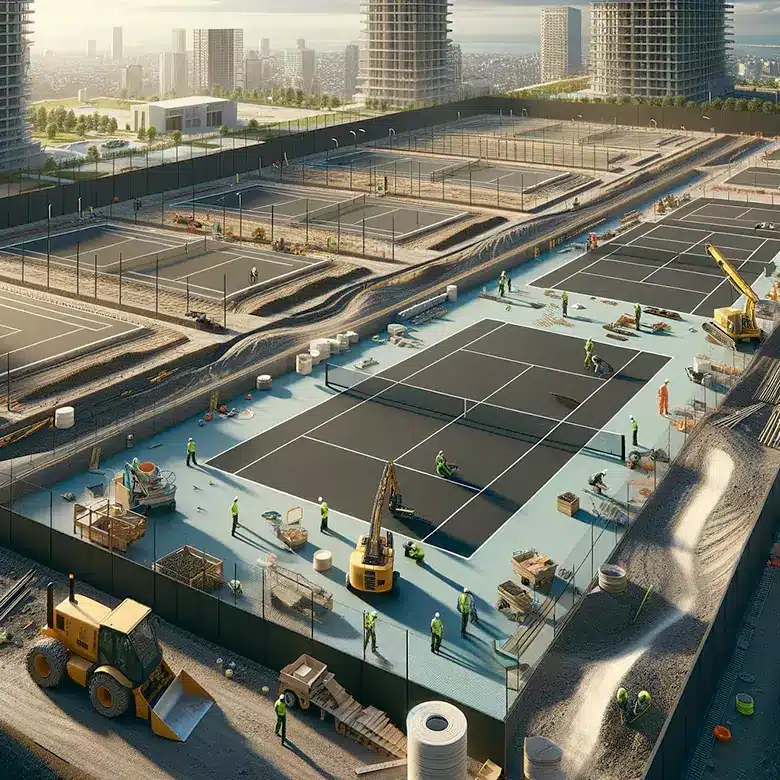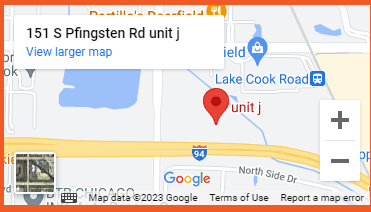Constructing a tennis court can be a rewarding project for DIY enthusiasts, offering personal satisfaction and long-term value to your property. This comprehensive guide breaks down the construction process of how to install a tennis court into manageable steps, ensuring you can approach this sizable task with confidence and clarity.
Checklist: Preparing for Tennis Court Construction
As with any DIY project, being prepared is vital for a successful outcome. Here is a checklist of what you need before you start the work.
Before You Begin:
- Research Local Regulations: Confirm zoning laws, building codes, and permit requirements. Secure necessary permits.
- Site Evaluation: Choose a flat, well-drained area. Consider court orientation to minimize sun glare.
- Budget Planning: Create a comprehensive budget including materials, labor, and unexpected costs. Set aside a contingency fund.
- Surface Selection: Decide on the type of surface (asphalt, concrete, clay, synthetic). Research their advantages and maintenance needs.
- Decide on Construction Approach: Assess whether to undertake a DIY project or hire professionals. Consider your skills and the complexity of the work.
- Maintenance Plan: Understand the long-term maintenance requirements of your chosen surface type.
- Environmental Considerations: Look into sustainable materials and proper drainage solutions.
- Insurance Check: your homeowner’s policy for any impacts or requirements adding a residential indoor tennis court may bring.
- Future Implications: Consider how the court may affect your property’s value and marketability.
Tools and Materials Needed:
- Surveying Equipment: To measure and level the site. Includes tape measures, laser levels, and stakes.
- Excavation Tools: Depending on scale, shovels, pickaxes, or machinery like backhoes are used for larger areas.
- Compaction Equipment: For preparing the sub-base, such as plate compactors or rollers.
- Construction Materials: Depending on the chosen surface – concrete, asphalt, clay, or synthetic materials.
- Drainage Materials: Pipes, gravel, and landscape fabric are used to construct effective drainage.
- Fencing Materials: Posts, mesh, and gates to enclose the court.
- Lighting Equipment: If planning for night play, include posts and lights.
- Line Marking Tools: Chalk or paint and straight edges for accurate line creation.
- Net and Posts: Ensure they are regulation size and of good quality.
- Personal Protective Equipment (PPE): Gloves, safety glasses, and sturdy footwear to ensure safety during construction.
Additional Equipment (if required):
- Rental Equipment: Consider renting heavy machinery like excavators or concrete mixers for larger tasks.
- Professional Consultations: If unsure, budget for hiring experts like surveyors, landscape architects, or civil engineers.
- Water Access: For mixing materials (like concrete) and compacting surfaces.
- Utility Check: Ensure no underground utilities will be disturbed during construction.
Ensure all these items are checked off before beginning your tennis court construction to ensure a smooth, compliant, and efficient building process.
Step 1: Planning and Design
The initial step in constructing a tennis court involves meticulous planning and design. This phase sets the foundation for the entire project.
- Site Selection: Identify a suitable area for your tennis court. The location should be level to minimize earthmoving costs. Also, consider the wind direction, proximity to trees (which can shed leaves onto the court), and accessibility for construction equipment and future players.
- Size and Dimensions: A standard tennis court requires a playing area of 78 feet by 36 feet for singles matches and 78 feet by 42 feet for doubles. Including the overrun areas, a total area of 120 feet by 60 feet is typically necessary—plan for this space, plus a margin for drainage, fencing, and landscaping.
- Obtaining Permits: Research and adhere to local zoning laws and building codes. The permitting process can vary widely between locations and may involve presenting your project plans to local authorities for approval. Be prepared for this process to take time and include fees.
Step 2: Ground Preparation
Ground preparation is crucial for creating a stable and level base for your tennis court.
- Clearing and Excavation: Remove any vegetation and obstacles from the site. Excavation involves leveling the ground and grading it for proper drainage. This might require professional equipment and expertise, especially if significant leveling is needed.
- Sub-Base Installation: The sub-base provides a stable foundation for your court and assists with drainage. Layer crushed stone or gravel and compact it to prevent settling. The thickness of this layer can vary based on soil conditions but typically ranges from 4 to 8 inches.
Step 3: Foundation and Surface
The foundation and surface of your tennis court can affect playing conditions and maintenance requirements.
- Foundation Laying: Depending on the type of court and soil conditions, you might install a concrete foundation, an asphalt layer, or a compacted aggregate base. Each material has different properties and costs associated with it.
- Surface Selection: The choice between asphalt, concrete, clay, or synthetic materials will impact the cost, performance, and upkeep of your court. Research the benefits and drawbacks of each surface type thoroughly before making a decision.
- Surface Application: Applying the surface material requires precision. For hard surfaces, this involves pouring and smoothing the asphalt or concrete. For clay courts, it means spreading, leveling, and compacting the clay material. Synthetic surfaces, meanwhile, need to be rolled out, trimmed, and secured.
Step 4: Fencing and Drainage
Fencing and drainage are essential for the functionality and longevity of your court.
- Fencing: Surround your court with high-quality fencing to keep tennis balls within the playing area and ensure safety. Chain-link fences are common due to their durability and visibility. Include gates for easy access.
- Drainage: Proper drainage prevents water accumulation that can damage the court surface and interfere with play. Install drainage systems around the perimeter of the court to channel water away effectively.
Step 5: Accessories and Markings
Accessories and court markings turn a paved area into a functional tennis court.
- Net and Posts: The net divides the court into two halves. Ensure that your net posts are positioned correctly (36 feet apart for singles) and securely anchored into the ground.
- Line Marking: Apply durable, visible paint to outline the boundaries, service boxes, and center mark of your court. Use accurate measurements to ensure compliance with official tennis standards.
- Accessories: Consider additional features such as benches, scorekeepers, and storage for equipment. These enhance the usability and enjoyment of your court.
Conclusion
Constructing a tennis court is a significant project that, when done correctly, can provide endless hours of enjoyment and add substantial value to your property. While the process may seem daunting, it’s an achievable goal with the right preparation, tools, and knowledge. To ensure a smooth construction process, remember to thoroughly research, plan, and budget before breaking ground.
Home Court Advantage is here to guide you through each step of your tennis court construction. Whether you’re seeking professional advice, need quality materials, or require expert installation services, we have the expertise and resources to support your project from concept to completion. Our team is committed to helping you create the perfect court that meets your needs and exceeds your expectations.
Ready to turn your tennis court dreams into reality? Contact Home Court Advantage today. Let us help you build a tennis court AND a lifetime of memories. Click here to get started on your journey to the ultimate home-court advantage.

Nate Parsons is the owner of Home Court Advantage, a leading manufacturer and supplier of premium residential and commercial athletic courts based in Northern Illinois. With a strong background in therapeutic recreation and business from York College, Nate has excelled in the sports industry, from college tennis to national rankings in platform tennis. He has served as the Director of Racquet Sports at Glen View Club, President of the Professional Platform Tennis Association, and as a teaching professional in tennis, pickleball, and platform tennis. Nate is also the founder of Pickleball AI, a platform for tracking players and points, and Club Dink, a pickleball brand that brings fun to the game.











